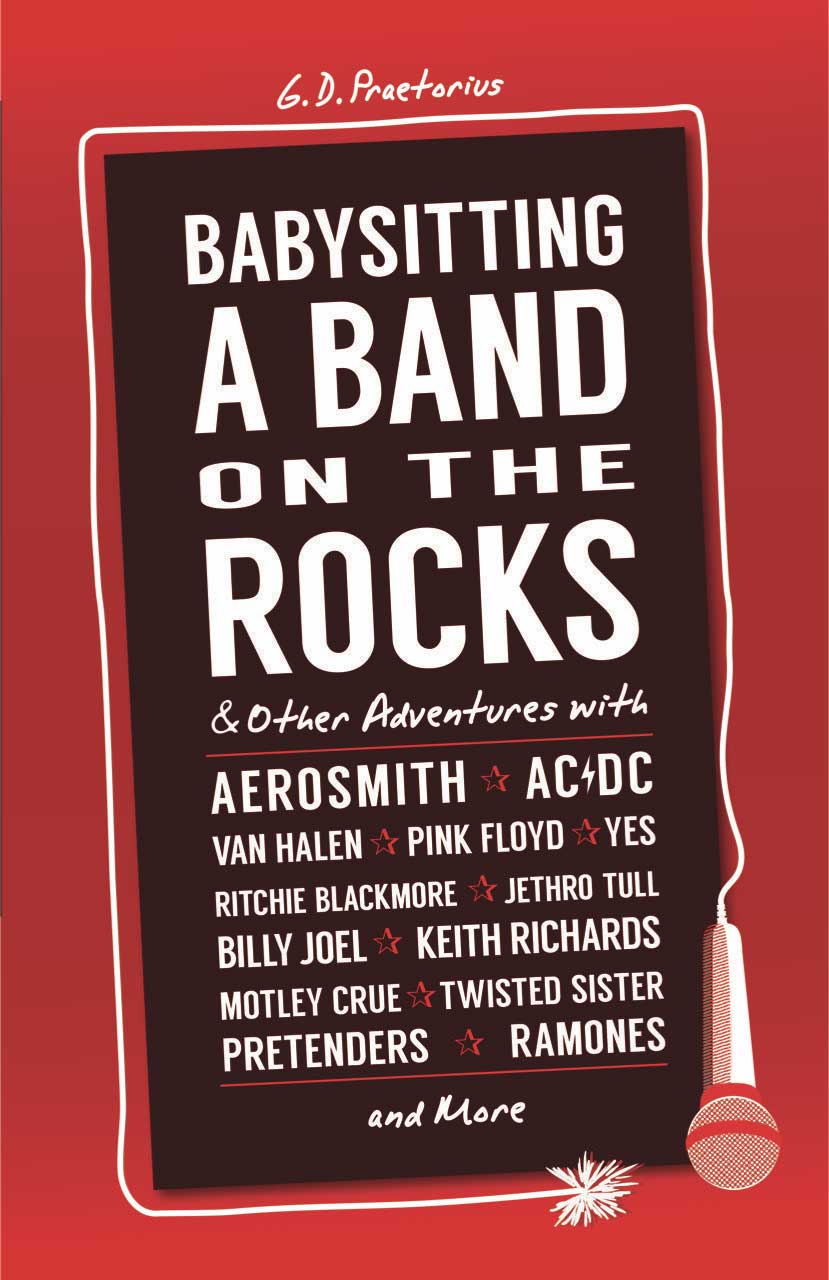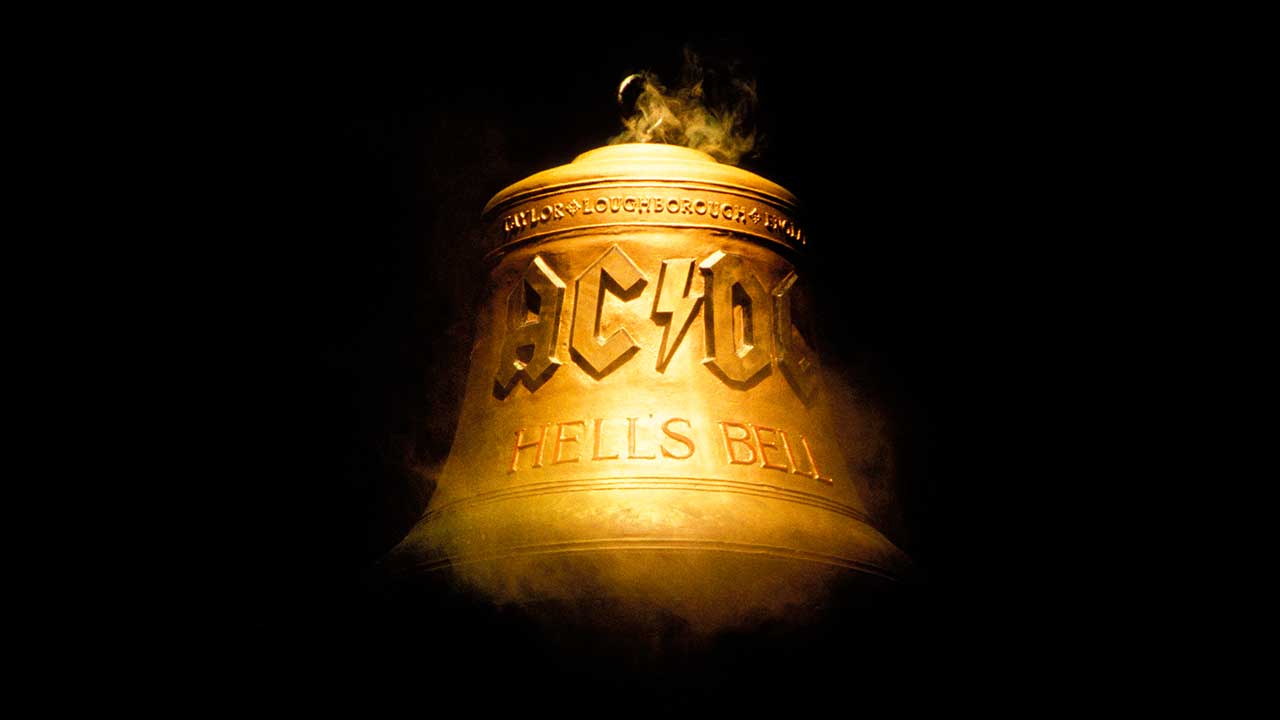In Babysitting A Band On The Rocks, author G.D Praetorius takes readers behind the scenes at rock concerts throughout the Northeast United States during the early 1980s.
Telling the story of his time working for a concert promotor, the book focusses on a year spent with Steven Tyler and Aerosmith, and also includes encounters with some of rock's other giants, including AC/DC, Van Halen, Keith Richards, Ritchie Blackmore, Yes and Motley Crue’s Tommy Lee.
The book features plenty of photos of the stars - both on stage and backstage - many of which have never been published before.
In the excerpt below, Praetorius describes the moment AC/DC arrive at Nassau Coliseum on the Back In Black tour, with a new singer out front and the infamous Hells Bell ready to be hoisted into action. Suffice to say, things did not go as planned.
Babysitting A Band On The Rocks is available from Loony Tunes and from branches of Newbury Comics throughout Northeast USA.

Watching AC/DC open the Grammy Awards 35 years after I met them was more déjà vu than Memory Lane. Brian Johnson’s vocal chords displayed no less power and his pitch remained perfect (at least to my ears) as he growled his way through his predecessor Bon Scott’s signature Highway to Hell. His hobbit-like frame still stood firmly in command of centre stage, the same black tee and denim form- fitting his now sixty-plus frame, the same black work boots and Andy Capp cap serving as vertical bookends.
Angus Young refused to hang up his English schoolboy out fit despite his increasingly crinkly kneecaps, and he duck-walked with all the energy of the bouncy Chuck Berry imitator that I led onstage with my Maglite back in 1980.
Ripping through power cords, Angus gripped tight to his high-slung Gibson SG just as he had in the months before the world would wake up to Back in Black, the exquisite Aussie metal masterpiece that had just been released and would go on to be one of the biggest selling records of all time.
As much as Freefall [Freefall Presentations, concert promoter] was lucky enough on more than one occasion to be at the right time and the right place with breaking artists – Van Halen’s rapid rise from third string at The Calderone to arenas across the U.S. a perfect case in point - we were just as often a little bit too early.
Mark Puma [Freefall boss] had presented AC/DC at The Calderone some months before I arrived on the scene, in what turned out to be one of lead singer Bon Scott’s final live appearances before he died alone on a roadside in a friend’s Renault, presumably a casualty of one-too-many nights of over-the-top partying that was ruled by the coroner as “death by misadventure.”
Few groups are able to move past the death of a lead singer, particularly one with as distinct a personality as Scott had. But the survivors quickly recruited British bar band front man Johnson and headed into the studio to write and record Back in Black, and that summer they began their tour to support it.
Just as Premier had insisted with Van Halen, AC/DC’s booking agency, ATI, was con dent that Back in Black would launch the band to new heights in the U.S. So instead of allowing us to make the safe bet and book them to now headline The Calderone, whose 2,435 seats we were sure could be an instant sellout, the agency instead insisted they play for us at Nassau Coliseum, a leap to 16,500.
As great as the record sounded, we felt it was too soon. Unfortunately this time we were right. By the day of the show we had sold not even 5,000 tickets, and we had no share of the concession revenues to fall back on.
Despite the soft sales, AC/DC arrived with their army of crews and equipment, rolling down the ramp into the Coliseum’s garage as day broke on the morning of the show. One by one each truck carefully backed into the vomitory to be unloaded.
I quickly realised that The Calderone could not have supported this new spectacle; the always high-wattage band had stepped up their game considerably. Countless cases were ramped to the floor, along with gargantuan sound and lighting rigs, amps upon amps, and The Bell.
AC/DC’s new set piece, Hell’s Bell, was British-forged bronze and easily weighing a ton or more. Hidden from our view as it nestled in its huge custom road case, we assumed The Bell to be just another benign prop until it quickly became evident that it could crush any one of us in an instant.
Four Teamsters together managed to dislodge it from its designated packing position within the Jenga-stacked semi, and at least as many stagehands had to gather on all sides to guide its wheels down the ramp, slowing the cube’s descent until it reached the industrial gray concrete floor. I followed as they towed it towards the front of the stage, the ramp at the rear too steep to push it up.
We called in the forklift to provide the necessary muscle to actually get the thing onstage. With sputters and whirs the driver positioned his prongs dead centre under The Bell's case. He pulled back the black ball-headed lever and with a groan the fork lifted The Bell, raising it about a foot above the stage as all present crossed their fingers and held their breath that the machine and its operator wouldn’t topple face forward.
The lift gently lowered the case to the deck, drew back its forks and there The Bell sat to the relief of all. Until the case promptly dropped, its castors cracking through the stage in unison as it came to rest flush and immovable. Its massive weight concentrated on its narrow wheels was apparently too much for the Coliseum’s stock staging.
As well planned as every detail generally is with a show of this size, this surprise put all but the AC/DC crew in a panic. Its castors wedged in the deck, its mass unable to be tipped it was impossible to reinsert the forks, the only way the Locals thought it was ever going to be moved again.
Minds great and small gathered around, alternating between brainstorm and hopelessness, but now almost three months and several dozen dates into the tour the roadies had apparently seen it all before, and they knew that the solution was really quite simple.
With little fanfare the case was unclipped and li ed from its base to reveal The Bell in all of its bronze glory. Forged by John Taylor & Co. Bellfounders, this bell was in fact one and the same as that heard on Back In Black. A scaled replica of Taylor’s Dennison Bell in the company's hometown of Loughborough, the AC/DC bell’s toll was supposedly recorded and subsequently reduced to half speed by the record’s engineer in order to achieve the more dirge-like sound heard on the album.
As we stood by, a heavy gauge cable was lowered from the ceiling and clipped to The Bell’s cannon. When the winch reversed the cable pulled taught, and The Bell tilted to its rear. As it cleared free of the case the bronze swung gently to and fro, fi nally settling enough to allow the crew to guide it as it was slowly hoisted to its place of honour high above, ready to toll for the band’s opening of Hell’s Bells.
The punctured stage was replaced, avoiding any unfortunate missteps or possible misadventures by Brian while he belted out AC/DC’s new signature song and the band’s older, equally rousing anthems.
Show time came around and I headed to the arena locker rooms to help escort the band. Leading the charge were a slight, boyish Angus, still youthful enough to carry off his Ash eld Boys High uniform, and barrel-chested Brian, the recipient of Bon Scott’s torch, both bursting at the seams with bravado.
Though we braced ourselves to lose a mild fortune, we knew we were about to witness something big, something destined to become the de fining tribute to those classic Spinal Tap clichés-to-come of sex, drugs and rock and roll.
And it all broke loose with the Infamous Bell, whose great weight sent it sinking straight through the stage, launching AC/DC to sales of over 200,000,000 records. Back in Black alone accounts for more than a quarter of them. Not bad for a band born on the border of the outback.

I was able to track down the British maker of the road case for The Bell, who added even more colour to the Hells Bells legend.
“I went over to measure up a couple of times for the flight case before the inside was spun and tuned, and then we collected it when it was finished. As I recall it weighed in at around 1100kgs.
"This original bell was only used for the Back in Black tour…and then a fiberglass copy was made. [The original bell] was so heavy [that] when Brian hit it, it didn’t swing, and you could not hit it hard enough to get a sound out of it… [But] when we had it at the factory to finish the flight case we would hit it with the forklift …to sound lunchtime!”
Babysitting A Band On The Rocks is out now.

